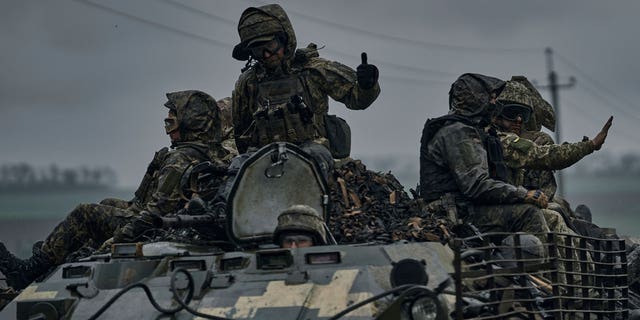US mulls sending top-shelf depleted uranium tank rounds to Ukraine
The U.S. is likely to send depleted-uranium shells to Ukraine along with the dozens of tanks the country will receive later this year, according to a new report, despite some concerns from officials.
The advanced shells sport unmatched penetrating power and are widely used for anti-armor use within the U.S. military. President Biden’s Defense Department has strongly pushed for sending the shells to Ukraine along with the U.S. tanks, though some in the administration have raised questions about health and environmental effects of the shells, the Wall Street Journal reported.
Depleted-uranium shells are not radioactive, but can have some after-effects if shrapnel is embedded in the flesh. Russia has also pounced on the U.K.’s delivery of the same shells to accuse Western countries of supplying Ukraine with “weapons with a nuclear component.”
“The projectile hits like a freight train,” former Army artillery officer Scott Boston told WSJ. “It is very long and very dense. So it puts a great deal of kinetic energy on a specific point on an enemy armor array.”
FOLLOWING KAKHOVKA DAM COLLAPSE IN UKRAINE, US COMBAT VETS ORGANIZATION SAVING RESIDENTS AMID FLOODING
The U.S. is poised to deliver 31 M1A2 Abrams tanks to Ukraine by this fall, bolstering the country’s armored capabilities after European countries delivered many German-made Leopard IIs earlier this year.
UKRAINE CLAIMS TO HAVE CAPTURED ANOTHER VILLAGE AS HIGHLY ANTICIPATED COUNTEROFFENSIVE UNDERWAY
Ukrainian troops are currently training on how to use and maintain Abrams vehicles in Germany. The turbine-engine battle tanks are highly advanced and require skilled maintenance, a key reason for the Pentagon’s initial hesitance to deliver the vehicles to Ukraine.

With depleted-uranium shells loaded, the Abrams tanks are capable of penetrating even the thickest armor on Russian tanks from long range.
Ukraine is already putting its Western-supplied armored vehicles to work in a large-scale counteroffensive launched last week. Ukrainian forces operating Leopard IIs and U.S.-made Bradleys have retaken seven villages from Russian control over the past week, but the counteroffensive has yet to make a major breakthrough past Russian lines.

Russian officials did not confirm Ukraine’s gains, which have not been verified. The gains amounted to only small bits of territory and underscored the difficulty of the battle ahead for Ukrainian forces, who will have to fight meter by meter to regain the roughly one-fifth of their country under Russian occupation.
The Associated Press contributed to this report.
Read the full article Here


